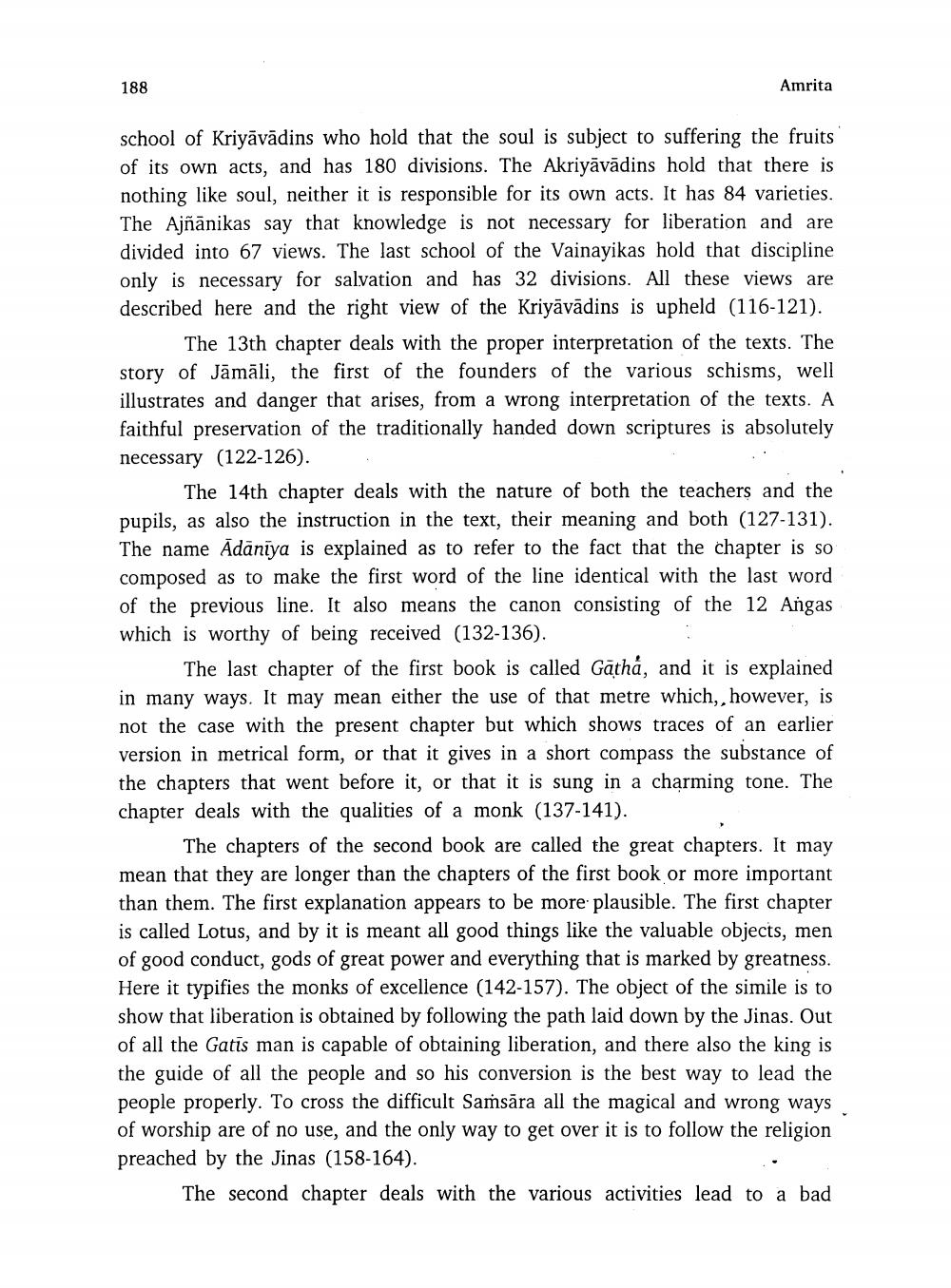________________
188
Amrita
school of Kriyāvādins who hold that the soul is subject to suffering the fruits of its own acts, and has 180 divisions. The Akriyāvādins hold that there is nothing like soul, neither it is responsible for its own acts. It has 84 varieties. The Ajñānikas say that knowledge is not necessary for liberation and are divided into 67 views. The last school of the Vainayikas hold that discipline only is necessary for salvation and has 32 divisions. All these views are described here and the right view of the Kriyāvādins is upheld (116-121).
The 13th chapter deals with the proper interpretation of the texts. The story of Jāmāli, the first of the founders of the various schisms, well illustrates and danger that arises, from a wrong interpretation of the texts. A faithful preservation of the traditionally handed down scriptures is absolutely necessary (122-126).
The 14th chapter deals with the nature of both the teachers and the pupils, as also the instruction in the text, their meaning and both (127-131). The name Ādāniya is explained as to refer to the fact that the chapter is so composed as to make the first word of the line identical with the last word of the previous line. It also means the canon consisting of the 12 Angas which is worthy of being received (132-136).
The last chapter of the first book is called Gatha, and it is explained in many ways. It may mean either the use of that metre which, however, is not the case with the present chapter but which shows traces of an earlier version in metrical form, or that it gives in a short compass the substance of the chapters that went before it, or that it is sung in a charming tone. The chapter deals with the qualities of a monk (137-141).
The chapters of the second book are called the great chapters. It may mean that they are longer than the chapters of the first book or more important than them. The first explanation appears to be more plausible. The first chapter is called Lotus, and by it is meant all good things like the valuable objects, men of good conduct, gods of great power and everything that is marked by greatness. Here it typifies the monks of excellence (142-157). The object of the simile is to show that liberation is obtained by following the path laid down by the Jinas. Out of all the Gatīs man is capable of obtaining liberation, and there also the king is the guide of all the people and so his conversion is the best way to lead the people properly. To cross the difficult Samsāra all the magical and wrong ways of worship are of no use, and the only way to get over it is to follow the religion preached by the Jinas (158-164).
The second chapter deals with the various activities lead to a bad




